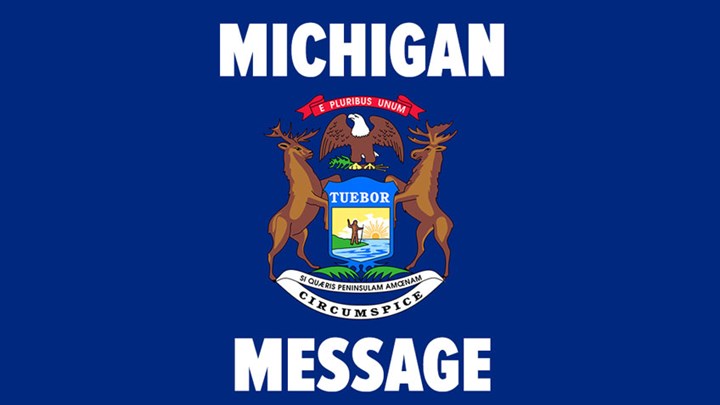
by Brian McCombie - Saturday, December 15, 2018

Across the country, hunting is experiencing some troubling trends as hunter participation numbers decline. A recent article in the Detroit Free Press shows the negative impacts that are being experienced in one state already—Michigan. Of course, when hunting is impacted, it won’t be long before wildlife conservation is hurt, too.
While there is some good news, too, the "Michigan Message” is clear: If hunters, conservation organizations and game agencies do not make the supreme effort now, hunting, wildlife and the North American model of Conservation as we know it could have a very bleak future.
The numbers tell a part of the story. As Keith Matheny, the Free Press journalist who turned out this very comprehensive story, noted, “From a high of 785,000 deer hunters in 1998, the number of licenses sold for Michigan's firearm deer-hunting season last year [2017] was down to 621,000—a nearly 21 percent decline. And those remaining hunters are graying, with most in their late 40s to late 60s, according to a demographic analysis conducted by Michigan Technological University. By 2035, projections are that the late-'90s rate [of deer hunting] will be cut by more than half.”
For those unaware, hunting and fishing in Michigan alone generate some $2.3 billion annually to the state economy and support more than 34,000 jobs. The article further notes that license fees and surcharges on hunting and fishing gear purchases fund most of the wildlife management and habitat preservation and restoration work done by the Michigan Department of Natural Resources (MDNR). Think about that just for a minute.
“People who hunt and fish in this state have really paid for conservation in this state, over a very long time,” said MDNR Director Keith Creagh. So, as participation in hunting of all sorts in Michigan dwindles—not just the aforementioned deer hunting—so, too, does the funding for conservation in the state.
And what about people in the various under-40 age groups? They are getting outdoors—they just aren’t hunting, Creagh explains. State park attendance and trail usage are at all-time highs, as participation in activities such as bird-watching, paddle-boarding and kayaking continue to soar.
If that weren’t bad enough, “Looming in the demographic data on hunters is an upcoming wall—an age where the physical rigors of hunting lead to a near-complete dropout,” he warns. “Historically, it has been around age 70, the data shows. While passionate baby boomers are pushing that wall farther out, a point will come where they have to hang up the hunter's orange for good.”
In essence, the Michigan Message shows a very disturbing triple-play at work: relatively few younger people hunting and a large segment of current hunters approaching the age where they may stop hunting—with future conservation funding hanging in the balance.
The Silver Lining
But all is not lost. There are two silver linings for Michigan’s hunting’s future to note: More women than ever are entering the hunting community, and there is a definite shift in segments of society toward consuming natural, organic foods.
As 9and10News.com recently reported, Dawn Freeland is representative of the many Michigan women who’ve become hunters over the last two decades. Freeland, 55, of Muskegon County, grew up in a hunting family—but hunting was seen as a “guys-only” activity. Still, she was interested in hunting and several years ago tried it—and loved it.
The news report noted Freeland also is the purveyor of the Women Hunt Too Facebook Page, which has more than 320,000 followers. Then there's her womenhunttoo.com, womenfishtoo.com and womencamptoo.com web pages featuring blogs, events, recipes and merchandise.
“She's [also] part of the one group of hunters in Michigan that's on the rise: women. From about 65,000 female deer hunters in 2013, that number is expected to grow to 100,000 female hunters by 2035, according to the Michigan Tech demographic study.
Of note, the National Rifle Association is among those organizations working hard to introduce more women to hunting and conservation with programs like the NRA Women’s Wilderness Escape, an annual two-day event where women of all skill levels ages 18 and older learn about shooting, hunting and life in the great outdoors under the supervision of NRA Certified Instructors and outdoor specialists.
To encourage women to consider careers in conservation, NRA Women’s Policies Committee established the NRA Women’s Wildlife Management/Conservation Scholarship over a decade ago. As this NRA Hunters’ Leadership Forum (NRA HLF) website has promoted, the $5,000 scholarship is awarded annually.
And as NRAHLF.org also recently reported, “For the last two-plus decades, Americans have been turning to natural, organic food as the healthier choice. And what could be healthier than the lean, low-fat protein found in wild game meat?”
That heathy food movement caught the attention of the Wisconsin Department of Natural Resources, which recently launched the “Learn to Hunt for Food” program, which focuses on hunting as a source of sustainable, natural foods for the organic lifestyle. Conservation groups like the Quality Deer Management Association (QDMA) are using the organic “hook” to introduce new people to hunting in their “Field to Fork” initiative.
Clearly, much more work needs to be done to secure the future of both hunting and wildlife conservation. But with the help of groups like the NRA and QDMA, efforts by state and federal agencies and the support of millions of American hunters, we can win this battle.
E-mail your comments/questions about this site to:
[email protected]
